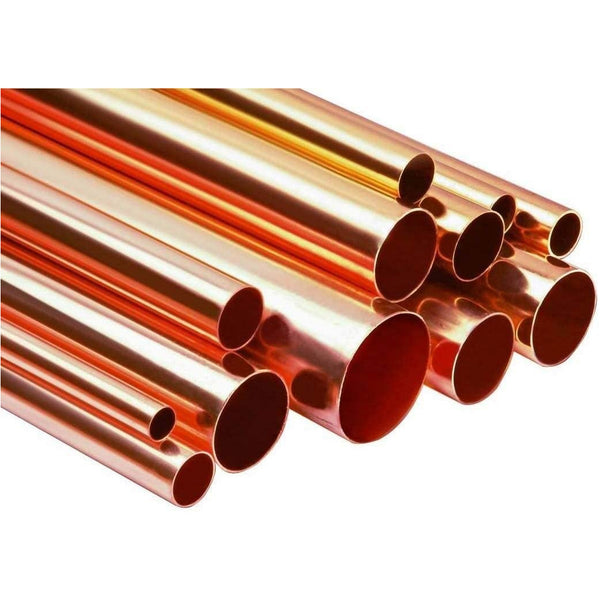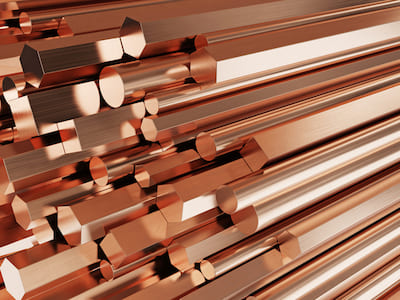Just How Copper Products Contribute to Lasting Practices in Different Markets
Copper products are increasingly identified for their considerable payments to sustainable methods across numerous markets, driven by their intrinsic residential or commercial properties such as recyclability, efficiency, and resilience. In eco-friendly power systems, for instance, copper enhances the performance of solar and wind technologies, while its application in building lessens waste through longevity. In addition, the material's antimicrobial features use promising advantages in healthcare setups. As sectors look for to take on even more lasting practices, the role of copper might show pivotal in attaining environmental objectives. What implications might this have for future advancements in sustainability?
Copper in Renewable Power
Copper plays a vital function in the improvement of sustainable power technologies, working as a crucial conductor in numerous applications. Its phenomenal electrical conductivity and resistance to deterioration make it an excellent product for electrical wiring, which is crucial in solar panels, wind turbines, and power storage systems. In solar photovoltaic systems, copper is made use of in the interconnections and circuitry, making it possible for reliable energy conversion from sunlight to electrical energy.
In wind energy, copper is essential to the generators and transformers that transform kinetic power into electrical energy, ensuring optimum efficiency and reliability. Additionally, the demand for electric cars (EVs) is enhancing, with copper being an essential part in batteries, motors, and charging infrastructure. The transition to EVs considerably boosts the demand for copper, as these lorries commonly make use of 4 times much more copper than conventional internal burning engine cars.
As the world seeks to reduce environment modification and shift to lasting energy resources, copper's role becomes progressively crucial. The material not just enhances the effectiveness and longevity of renewable resource systems but likewise supports the more comprehensive objective of decreasing greenhouse gas emissions and advertising a sustainable future.
Eco-Friendly Building Materials
Recently, there has actually been a notable shift towards the fostering of environment-friendly building materials in response to growing ecological concerns. This adjustment is encouraged by the requirement for lasting choices that reduce ecological footprints while keeping structural stability and visual charm.
Copper, known for its toughness and recyclability, has arised as a principal in this sector. It can be made use of in roof, pipes, and electrical systems, adding to power efficiency and decreasing waste. Copper's longevity means less replacements in time, further improving its sustainability account.
Furthermore, products such as bamboo, redeemed wood, and recycled steel are getting appeal. These options not just supply decreased ecological impact however likewise advertise resource preservation. As developing codes significantly highlight sustainability, architects and builders are integrating these products right into their jobs, promoting technology in design.
The raising adoption of environmentally friendly building products shows a wider commitment to sustainability in the developed setting. By focusing on these materials, the building and construction industry can considerably minimize its carbon footprint, straighten with regulative requirements, and sustain a healthier environment for future generations. This trend marks an essential action towards a much more lasting future in construction.
Copper's Role in Healthcare
Current research studies have highlighted the substantial role of copper in healthcare settings, particularly as a result of its antimicrobial residential or commercial properties. Copper surface areas have actually been revealed to reduce the presence of virus, including viruses and bacteria, by approximately 99.9% within a brief period. This impressive efficacy makes copper a very useful product for high-touch surface areas in medical facilities, such as doorknobs, bed rails, and IV poles, consequently adding to improved infection control procedures.
Along with its direct antimicrobial effects, copper likewise plays a duty in the wider context of medical facility sustainability (Copper Products). By integrating copper Visit This Link into clinical tools and home furnishings, medical care facilities can decrease the incidence of healthcare-associated infections (HAIs), which not only improves client results however also lowers the costs connected with extensive health center keeps and extra therapies
Moreover, copper's sturdiness and recyclability line up with lasting practices, permitting liable resource management. As medical care systems progressively prioritize both individual safety and environmental stewardship, the integration of copper items is coming to be a lot more common. This double benefit highlights copper's vital contribution to a healthier, much safer, and a lot more sustainable medical care environment.
Sustainability in Transport

Furthermore, copper's durability and deterioration resistance add to the long life of transportation facilities (Copper Products). In rail systems, for example, copper components boost the dependability and effectiveness of signaling and power systems, essential for reducing hold-ups and energy intake. Furthermore, copper's function in renewable energy systems, such as solar and wind, sustains lasting transportation solutions by offering clean power for electric transit choices
Investments in copper modern technology not just foster sustainability yet additionally boost financial development and task production in environment-friendly sectors. As sectors aim to satisfy stringent environmental regulations, the application of copper products in transportation arises as a crucial strategy in attaining sustainability goals and advertising a cleaner, more efficient future.
Copper and Round Economy
As the world increasingly welcomes sustainability, the duty of copper in the round economy comes to be ever extra significant. Copper's inherent buildings-- such as its conductivity, recyclability, and toughness-- setting it as a key material in a resource-efficient economy. The round economy aims to reduce waste and take full advantage of source usage via recycling and reusing materials, and copper excels in this regard.
The steel can be recycled indefinitely without loss of high quality, making it an ideal prospect for sustainable techniques across various industries, including building, electronics, and eco-friendly power. By recycling and recouping copper from end-of-life items, industries can substantially reduce the check over here requirement for virgin products, thus lowering ecological effects connected with mining and handling.
Moreover, the integration of copper right into round economy frameworks not just conserves sources however additionally promotes technology. Businesses that prioritize copper recycling add to a more sustainable supply chain, improving their competitiveness while lining up with governing demands and consumer choices for ecologically liable items.
Final Thought
To conclude, copper products substantially add to lasting methods throughout multiple sectors. Their crucial role in enhancing renewable energy modern technologies, advertising environmentally friendly building products, sustaining infection control in health care, facilitating lasting transport, and personifying the concepts of a circular economic situation underscores the convenience and significance of copper. By incorporating copper right into different applications, industries can attain better efficiency, lower ecological impact, and straighten with international sustainability goals, inevitably promoting an extra lasting future.

Copper's exceptional conductivity makes it a recommended product in electrical car (EV) systems, improving power efficiency and efficiency. Additionally, copper's function in sustainable power systems, such as solar and wind, sustains lasting transport services by providing clean energy for electrical transit options.
Their vital function in enhancing renewable energy technologies, advertising environment-friendly construction products, supporting infection control in healthcare, facilitating lasting transportation, and embodying the concepts of a circular economic climate underscores the versatility and value of copper.